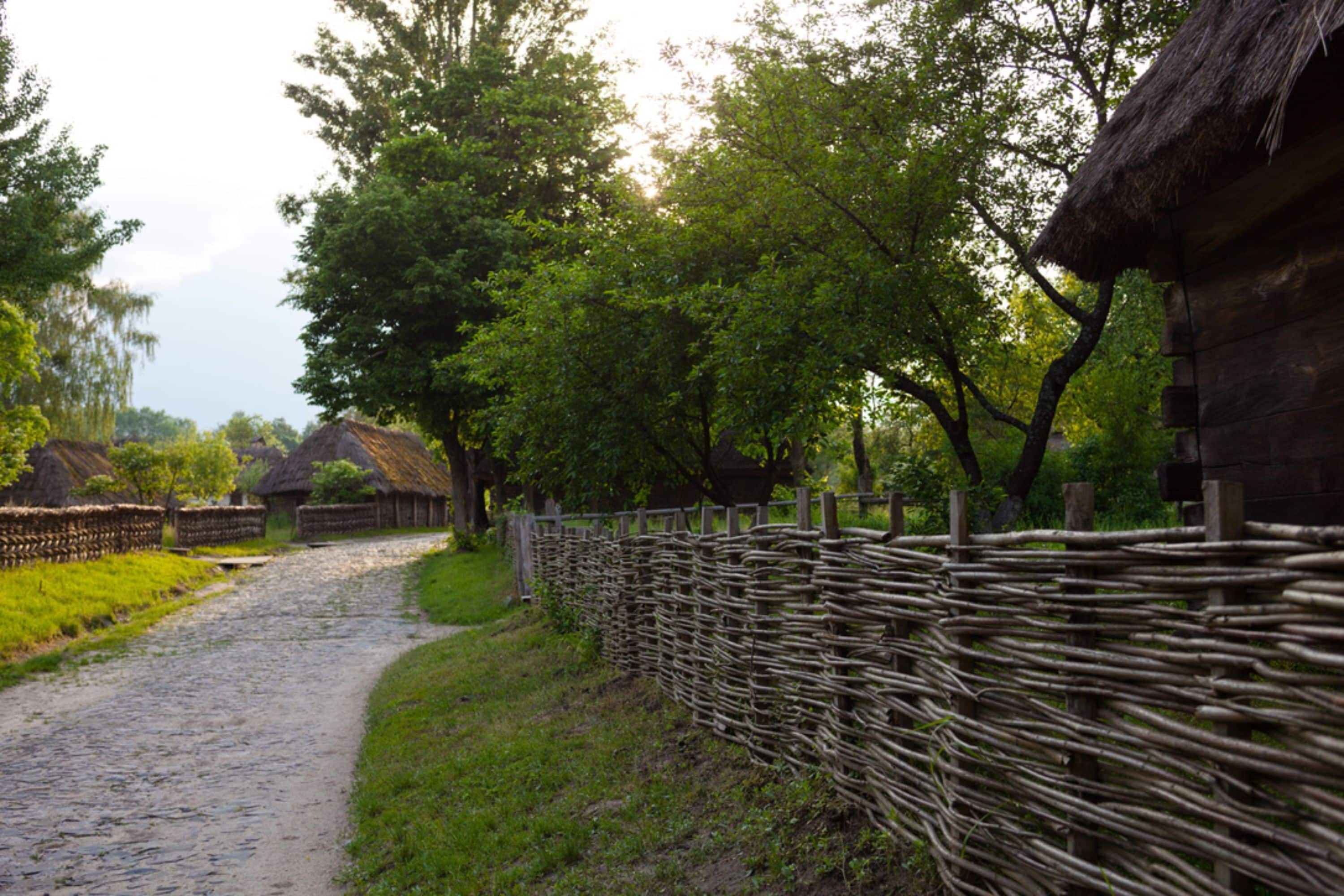Woven fence panels
Yard or garden fences made of woven branches have been in use for centuries. ‘The art of fence weaving’ used to be a highly esteemed trade, and even today they’re still very popular. Woven fence panels are a durable possibility to fence off your garden and, what’s more, relatively cheap and very eco-friendly. A woven fence boosts the biodiversity and has a beautifully natural look.
Leaving the placement of your woven fence panels to an expert? Request your free quotes here.
The biggest advantage of woven fence panels is the fact that you don’t have to cut down any trees, while at the same time still being a completely wooden product. Willow branches are most commonly used for this type of fence. Willows can be found all over the country, and have to be pollarded every year anyway. This method of pruning is not harmful to the trees, on the contrary even. When willows are not pollarded, they can split open under the weight of their own branches. So, the branches of a willow tree are actually nothing more than a by-product of sensible conservancy.
Types of wood and qualities of woven fence panels
The wood of the pollard willow is most commonly used in woven fence panels. A less common choice is hazel, and that’s not without reason. Willow branches are know for their bending properties. They’re easily woven into the structure of the fence, without any form of manipulation. Nonetheless they are very sturdy and won’t break that easily, even when the wood gets drier.
Woven fence panels can stay put for decades and needs surprisingly little maintenance. The young branches are, at the time they’re woven, very flexible. But they get sturdier over time. So there’s no need to worry about your woven fence not being able to keep animals in or out. Even the wind won’t best this fence. The slightly open structure of the woven fence panels can absorb the wind well and let it through very softly.

Types of woven fence panels and their placement
Woven fence panels are a stylish way of fencing off your garden. There are, however, a few things you should take into account. The placement, for example, is a trade in itself. We wouldn’t want to underestimate your capabilities, of course, but know that placing woven fence panels is a whole other matter than simply placing ready-made garden fences. So you are probably going to have to leave it to a professional contractor. On the other hand, these willow tree fences are made of a by-product, so the cost of material is considerably lower than that of a fence made in any other material. Nowadays you can even buy woven fence panels. These are ready-made garden fence panels, available in different heights and lengths. Prices of this turnkey formula are generally a bit higher, but they are way easier to place.
The average price for woven fence panels varies between £25 and 90, depending in no small part on the chosen material, thickness and height of the fence. Of course, the placement will influence the price as well.
Do you want to place woven fence panels, but leave the placement to an expert? Via our quotation page you can request free tailor-made prices. Click for more info.
DIY woven fence panels with branches
If you are a handy person, you can always weave that fence yourself. The thing you need first are fresh willow tree branches with a diameter of 0.8 to 2 inches. In order to make your fence stronger, your best choice for fence posts would be branches with a diameter of 2 to 4 inches. These have to be anchored into the ground every 12 to 20 inches. However deep the poles need to be, depends on the height of your fence, although a minimum of 12 inches is recommended. When you provide the ends of the branches with a sharp point, they are easily put into the ground with a hammer.
Once the fence posts are securely put into the ground, the weaving can begin. Start at the bottom with a few thick branches, and then just vary regularly with both thin and thick branches, so you form a beautiful and complete whole. To finish the woven fence panels, you better choose a thick branch that is fixed to the fence posts with nails. That way all the branches stay beautifully in place.
